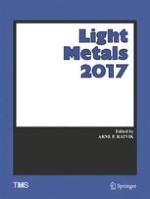2017 | OriginalPaper | Chapter
Co-evolution of Carbon Oxides and Fluorides During the Electrowinning of Aluminium with Molten NaF–AlF3–CaF2–Al2O3 Electrolytes
Authors : M. M. R. Dorreen, M. M. Hyland, R. G. Haverkamp, J. B. Metson, Ali Jassim, B. J. Welch, A. T. Tabereaux
Published in: Light Metals 2017
Publisher: Springer International Publishing
Activate our intelligent search to find suitable subject content or patents.
Select sections of text to find matching patents with Artificial Intelligence. powered by
Select sections of text to find additional relevant content using AI-assisted search. powered by
